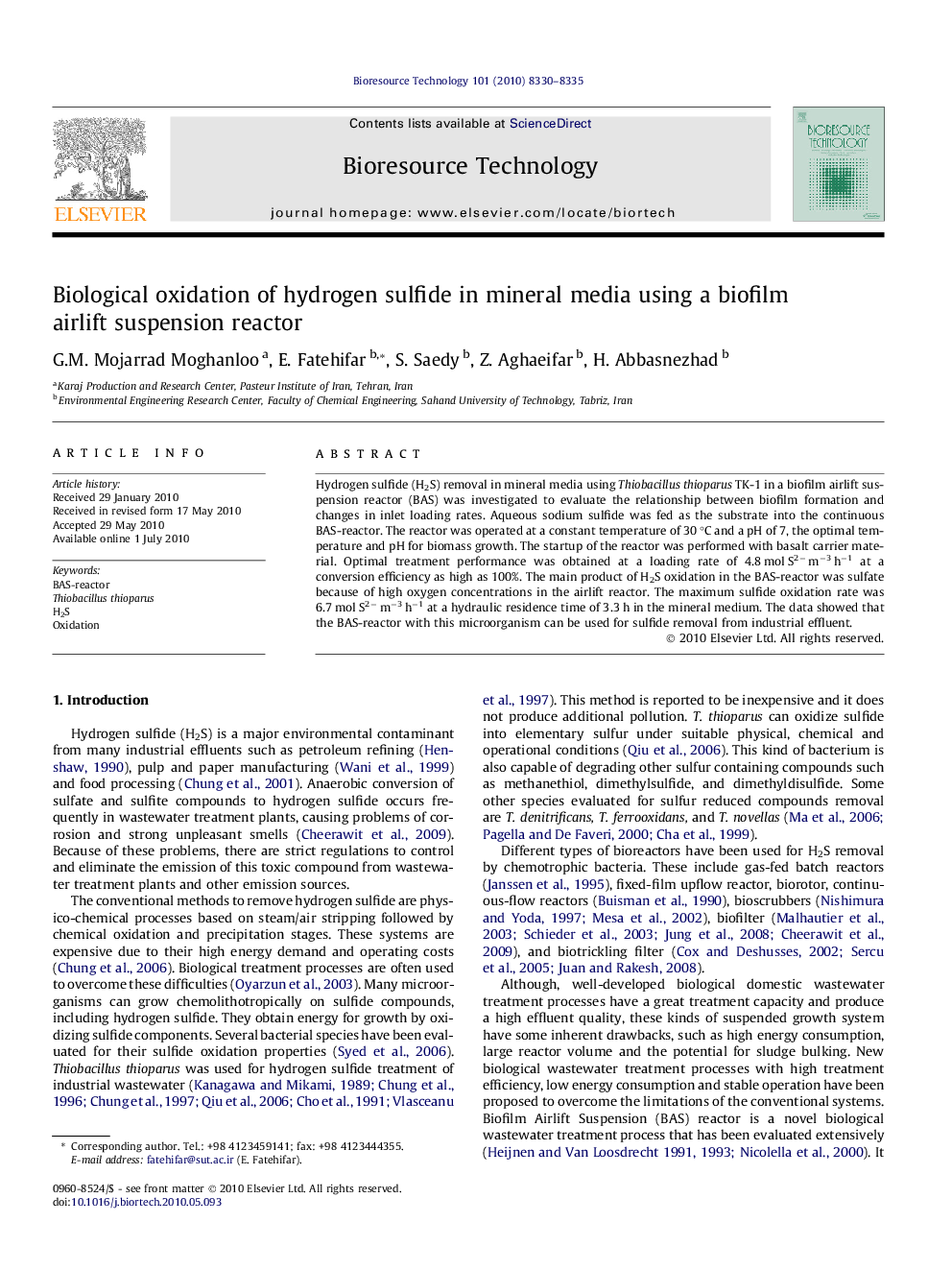| کد مقاله | کد نشریه | سال انتشار | مقاله انگلیسی | نسخه تمام متن |
|---|---|---|---|---|
| 682172 | 888976 | 2010 | 6 صفحه PDF | دانلود رایگان |

Hydrogen sulfide (H2S) removal in mineral media using Thiobacillus thioparus TK-1 in a biofilm airlift suspension reactor (BAS) was investigated to evaluate the relationship between biofilm formation and changes in inlet loading rates. Aqueous sodium sulfide was fed as the substrate into the continuous BAS-reactor. The reactor was operated at a constant temperature of 30 °C and a pH of 7, the optimal temperature and pH for biomass growth. The startup of the reactor was performed with basalt carrier material. Optimal treatment performance was obtained at a loading rate of 4.8 mol S2− m−3 h−1 at a conversion efficiency as high as 100%. The main product of H2S oxidation in the BAS-reactor was sulfate because of high oxygen concentrations in the airlift reactor. The maximum sulfide oxidation rate was 6.7 mol S2− m−3 h−1 at a hydraulic residence time of 3.3 h in the mineral medium. The data showed that the BAS-reactor with this microorganism can be used for sulfide removal from industrial effluent.
Journal: Bioresource Technology - Volume 101, Issue 21, November 2010, Pages 8330–8335